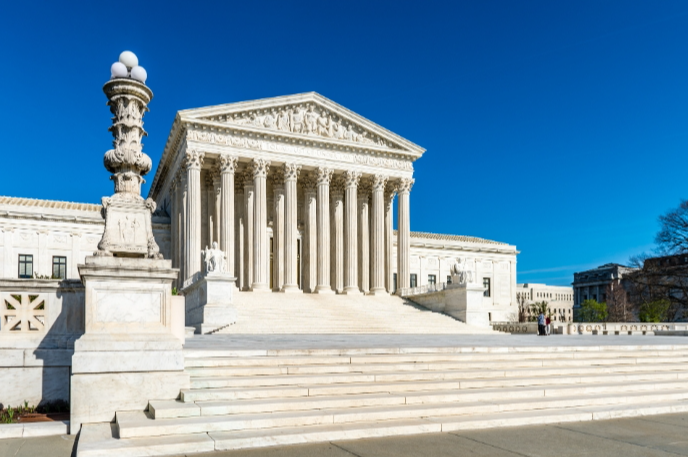The Supreme Court of the United States: An Introduction

The Supreme Court of the United States is the highest court in the country and the final authority on the interpretation of the Constitution and the laws of the nation. It is also the guardian of the rights and liberties of the American people. In this article, we will explore some of the facts, history, and functions of this important institution.
The Creation and Structure of the Supreme Court
The Supreme Court was created by the Constitutional Convention of 1787 as the head of a federal court system, though it was not formally established until Congress passed the Judiciary Act in 1789. The Constitution gave the Supreme Court the power to hear cases arising under the Constitution, laws, or treaties of the United States; cases involving the United States as a party; cases between states or between citizens of different states; and cases of admiralty and maritime jurisdiction. The Constitution also gave the Supreme Court original jurisdiction (the authority to act as a trial court) in cases affecting ambassadors, other public ministers, and consuls and in cases in which states are a party. In all other cases, the Supreme Court has appellate jurisdiction (the authority to review decisions of lower courts).
The Constitution did not specify the number or qualifications of the justices on the Supreme Court. The number varied until Congress finally settled on nine in 1869. The Constitution also did not set any qualifications to become a Supreme Court justice, which means the president can nominate anyone, and the Senate cannot create any qualifications to limit who the president chooses. The Senate can simply veto or approve the president’s pick. The justices are appointed for life, unless they resign, retire, or are impeached and removed by Congress.
The Supreme Court consists of one chief justice and eight associate justices. The chief justice presides over the Court, assigns the writing of opinions, and represents the Court in official functions. The associate justices rank according to their seniority of appointment. The most senior associate justice is called the “swing justice” because he or she often casts the deciding vote in closely divided cases.
The Functions and Procedures of the Supreme Court
The Supreme Court has the power of judicial review, which means it can declare acts of Congress or the president unconstitutional if they violate the principles of the Constitution. This power was established by the landmark case of Marbury v. Madison (1803), in which Chief Justice John Marshall declared that “it is emphatically the province and duty of the judicial department to say what the law is”. The Supreme Court can also overturn its own precedents, though it usually follows the doctrine of stare decisis (let the decision stand), which means it respects the continuity and stability of the law.
The Supreme Court rules on between 80 and 90 cases per year. It receives between 7,000–8,000 petitions for review per term, which runs from October to June. The justices decide which cases to hear based on several criteria, such as the importance of the legal question, the conflict among lower courts, the solicitor general’s recommendation, and the “rule of four”, which means that at least four justices must agree to grant a petition. The parties involved in a case submit written briefs to the Court, and may also present oral arguments, which are limited to 30 minutes per side. The justices then meet in private to discuss and vote on the case. The majority opinion, which represents the Court’s official judgment and reasoning, is assigned by the chief justice or the most senior justice in the majority. The dissenting opinion, which expresses the views of the justices who disagree with the majority, is also written by one or more justices. Sometimes, there are also concurring opinions, which agree with the outcome but not the reasoning of the majority.
The Supreme Court’s decisions are final and binding on all lower courts and government officials. They are also published in the United States Reports, the official record of the Court’s rulings. The Supreme Court’s opinions are often cited by lawyers, scholars, and policymakers as authoritative sources of constitutional interpretation and legal precedent.
The Impact and Legacy of the Supreme Court
The Supreme Court has played a vital role in shaping the history and development of the United States. It has resolved many of the most controversial and consequential issues in American society, such as slavery, civil rights, abortion, gay rights, free speech, federalism, and separation of powers. It has also influenced the culture and values of the American people, as well as their expectations and attitudes toward the government and the law. The Supreme Court has been praised as a protector of democracy and justice, as well as criticized as a usurper of power and a threat to liberty. The Supreme Court has also inspired and challenged other nations and legal systems around the world.
The Supreme Court of the United States is a unique and remarkable institution that deserves our attention and respect. It is not only the highest court in the land, but also the ultimate guardian and interpreter of the Constitution. It is the final arbiter of the law, and the last resort for the American people. It is the Supreme Court of the United States.




